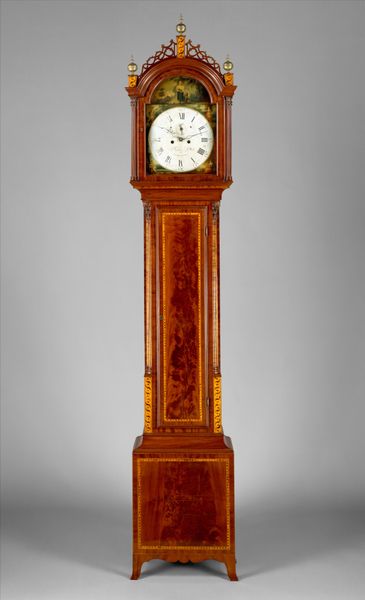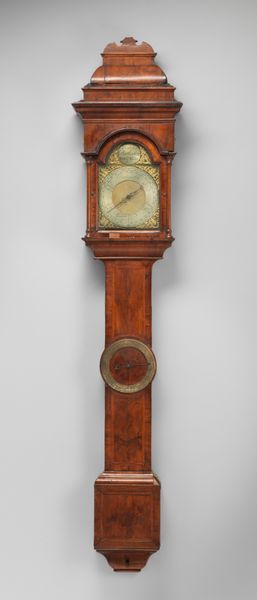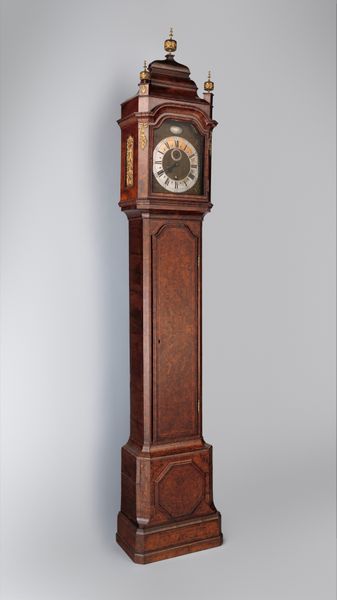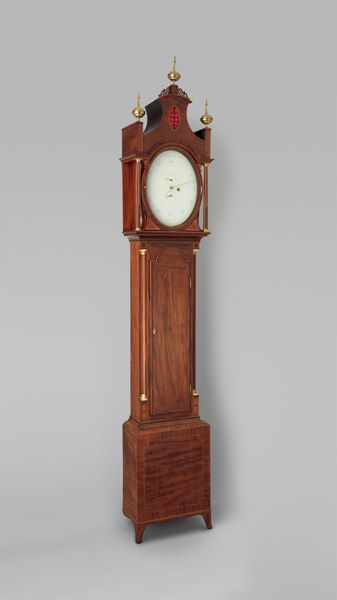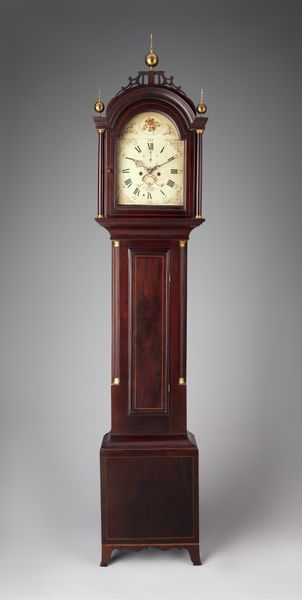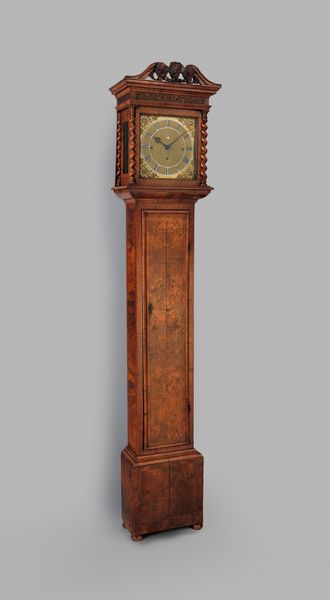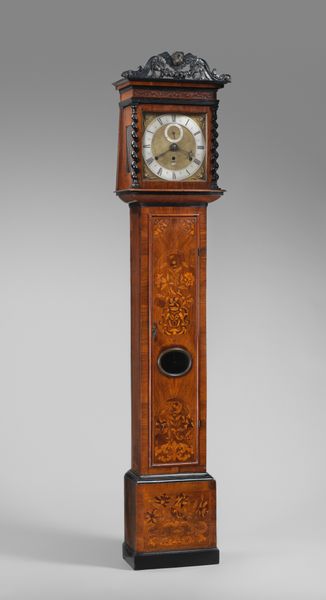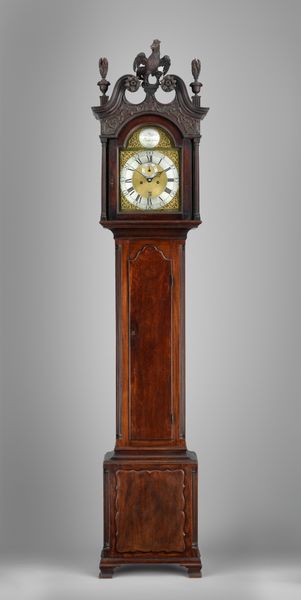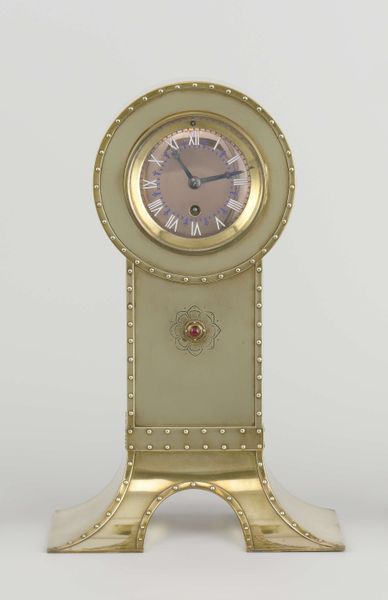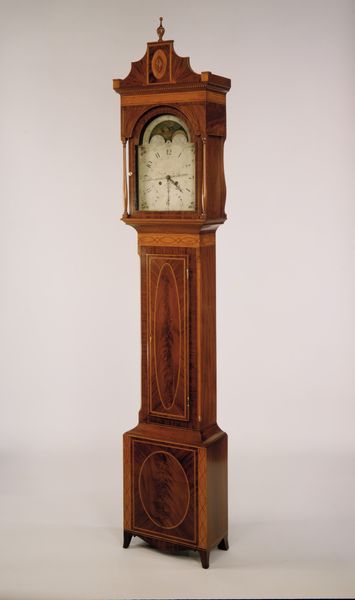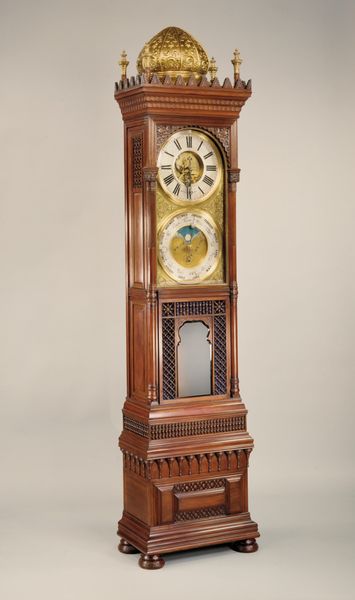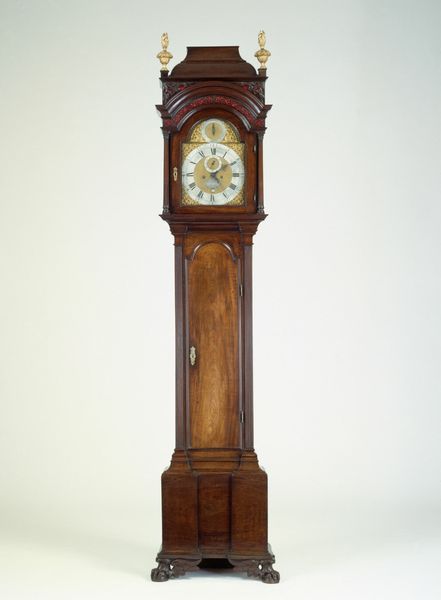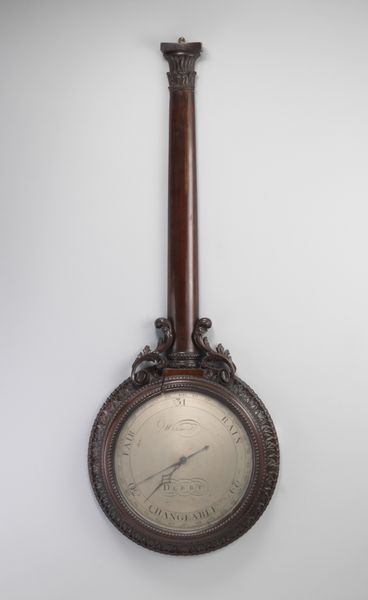
metal, sculpture, wood
#
neoclacissism
#
metal
#
form
#
sculpture
#
line
#
wood
#
decorative-art
Dimensions: Overall: 75 × 21 1/8 × 7 5/8 in. (190.5 × 53.7 × 19.3 cm)
Copyright: Public Domain
Editor: This striking object is the "Obelisk Clock with a Franklin Movement," crafted between 1780 and 1790 by David Roentgen. It's made of wood and metal, and currently resides at the Metropolitan Museum of Art. I am really drawn to the golden, refined lines and their contrast against the organic burl. It's elegant and a bit imposing! What do you see in this piece? Curator: An obelisk… immediately calls to mind ancient Egyptian power and solar worship. It's a deliberate invocation. This clock, rising like a monument, uses its form to lend itself a cultural memory. It almost *demands* reverence from the viewer and owner. The “Franklin movement” hints further –a symbol of enlightenment thinking joined with an archaic form. Editor: So the form carries more than just aesthetic value? Curator: Precisely. The very *idea* of an obelisk resonates with stability, endurance, and a connection to the past. The clock's function—measuring time—is cleverly intertwined with this message of continuity. Gold often indicates transcendence and divinity; here it suggests the idea that time is precious. What stories could time itself tell if we stopped to observe it? Editor: That's fascinating! The blend of the ancient and modern... Did many own objects in the style of the antique? Curator: During this Neoclassical period, this appropriation was an intentional look backward, where morality, reason and order converged with a taste for lavish decor. With its sleek lines and the weight of the obelisk form, one could view it as aspirational for a patron looking to place themself into history. Editor: I never considered how the object's shape connects it to such a complex web of cultural meanings. I'll never look at a clock the same way again! Curator: Indeed. It’s objects like these that continue to unlock how symbols impact us.
Comments
No comments
Be the first to comment and join the conversation on the ultimate creative platform.
